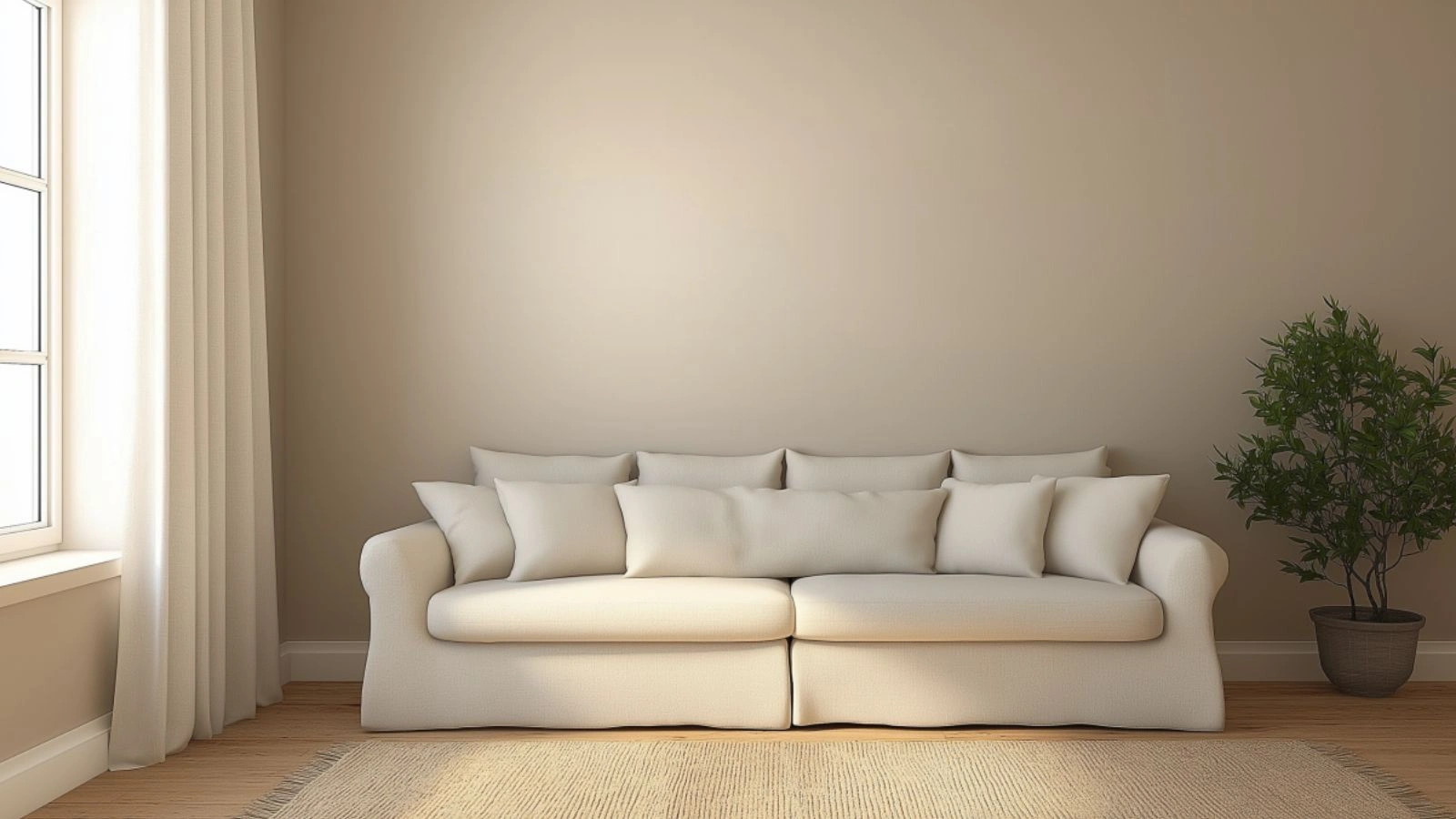Beige Living Room Ideas with Natural Elements for a Serene and Elegant Home Aesthetic
Table of Contents
In an age where overstimulation is constant, the allure of a serene, grounding space is more powerful than ever. Homeowners are turning to beige living rooms as a timeless design choice—not only for their neutral beauty but also for their ability to create a calming and cozy ambiance. According to interior design experts, beige tones evoke feelings of relaxation, stability, and warmth—ideal for any living room retreat.
The beauty of beige lies in its versatility. It works with nearly every style—from minimalist to bohemian, modern to rustic. But when paired with natural elements like wood, rattan, greenery, or stone, a beige living room becomes more than a color scheme. It transforms into a sensory experience of warmth, texture, and peace.
In this post, we’ll dive deep into beige living room ideas that embrace natural materials and organic touches. You’ll discover how to layer textures, choose the right furnishings, introduce soft lighting, and style your space in a way that feels both luxurious and lived-in. Whether you’re redecorating an entire space or just refreshing a few corners, these ideas will help you build a beige-toned sanctuary that calms the mind and soothes the senses.
Start with a Neutral Foundation for Flexibility
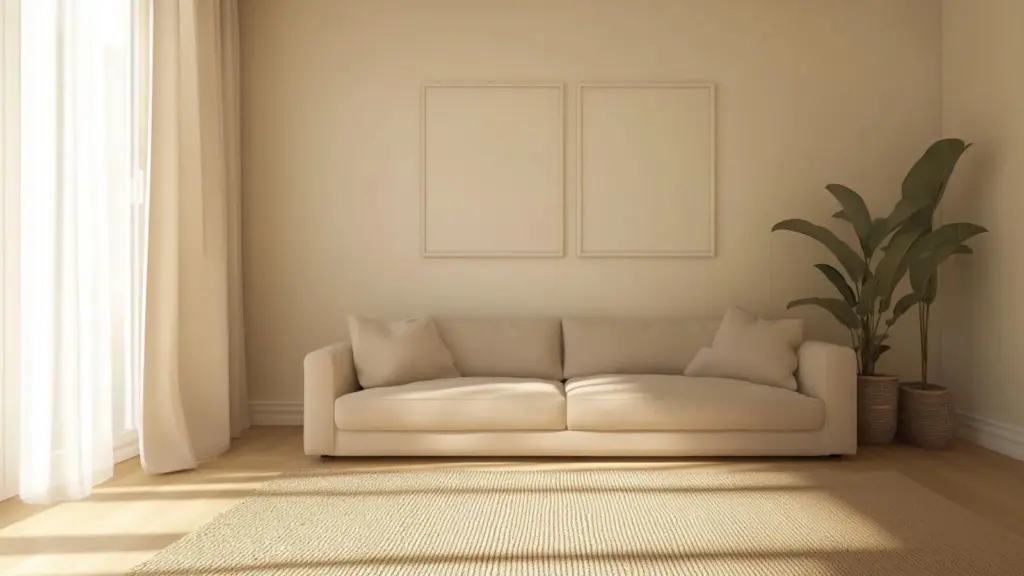
A serene beige living room begins with a strong neutral base. Think walls painted in soft almond, ivory, or warm sandstone. This foundation sets the tone for everything else in the room. Beige’s greatest strength is that it allows you to build upon it endlessly—creating a canvas where natural textures and tones can shine.
When choosing paint, go for warmer undertones like creamy beige or mushroom rather than stark taupes. These hues reflect light beautifully, enhancing the room’s sense of airiness. Pair your walls with light-toned hardwood floors, or opt for natural fiber rugs like jute or sisal for added earthiness.
Your foundation should also include major pieces of furniture—such as your sofa or coffee table—in beige or soft off-white tones. This neutral backdrop ensures every organic accent, from wooden bowls to ceramic vases, has space to breathe.
Neutral Foundation Design Guide
| Foundation Element | Recommended Shades | Natural Materials to Pair With |
|---|---|---|
| Wall Color | Cream, almond, mushroom | Rattan, wood, linen, stone |
| Sofa Upholstery | Beige, oatmeal, ivory | Wool throw, cotton cushions, jute rug |
| Flooring | Light oak, bamboo | Layered area rugs, soft textiles |
| Large Area Rugs | Sisal, jute, flax | Works under neutral or wooden furniture |
Layer in Textures for Visual Depth
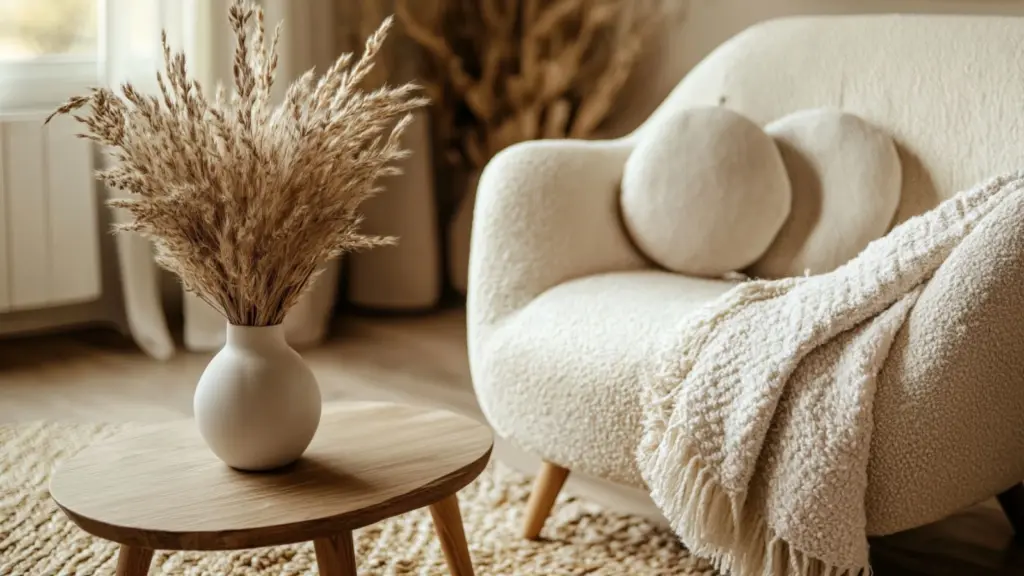
Beige doesn’t mean boring—but to keep it interesting, layering textures is essential. In a space where color variation is minimal, touch becomes the main design language. Introducing varied tactile elements creates richness and keeps your beige living room from feeling flat.
Start with your soft furnishings. A nubby wool throw draped over a smooth linen couch creates contrast. Add a knit pouf, a velvet pillow, or a boucle accent chair. Each fabric adds a new texture that draws the eye and invites interaction.
Hard textures matter too. Think hand-thrown ceramic vases, raw-edge wooden tables, or stone bowls. These elements pair beautifully with beige tones and add a grounded, organic feel to your room. Don’t forget woven materials—rattan trays, cane sideboards, or seagrass baskets—these add an artisanal touch that celebrates craftsmanship and nature.
Keep layering intentional. Too much can overwhelm, but just enough creates balance and movement. Use a combination of matte, rough, and soft finishes to bring life into every corner of the room.
Texture Layering Breakdown
| Texture Type | Material Examples | Where to Use |
|---|---|---|
| Soft Textures | Linen, wool, velvet, boucle | Throw blankets, pillows, upholstered chairs |
| Natural Fibers | Jute, sisal, rattan, cane | Area rugs, lampshades, baskets |
| Hard Organic Textures | Wood, stone, ceramic | Coffee tables, decorative accents |
| Reflective Elements | Glass, brushed brass | Lighting fixtures, side tables |
Bring Nature Indoors with Organic Accents
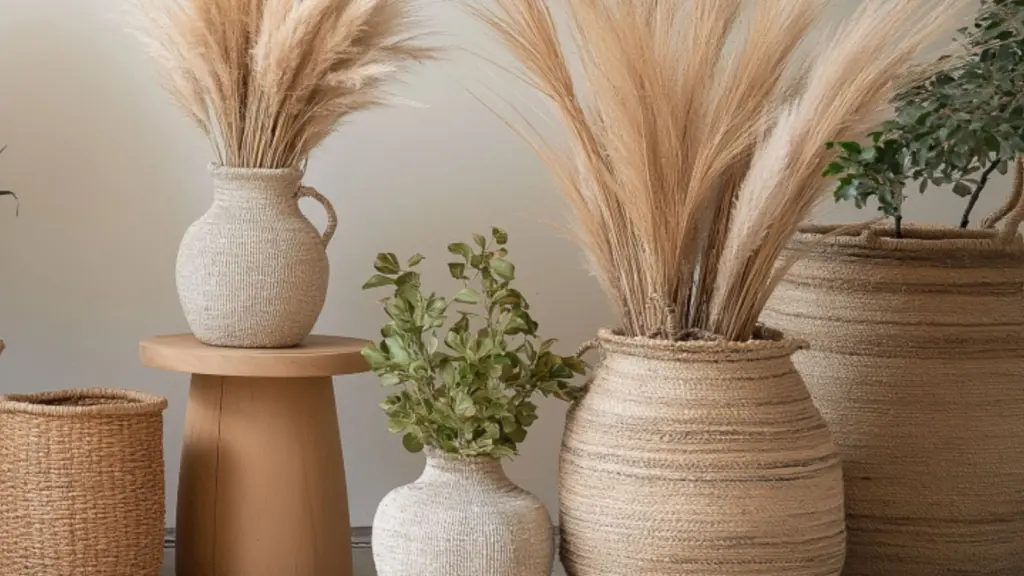
Natural elements are essential to creating a serene atmosphere. Think of your living room as an extension of the outdoors—calm, grounding, and full of life. By bringing in raw materials and botanical accents, you’ll reinforce the peaceful vibes of a beige color palette.
Start with houseplants. Lush greenery like fiddle leaf figs, snake plants, or eucalyptus stems offer rich contrast without clashing with beige. Their deep greens balance the lightness of the palette, while their presence adds oxygen and vitality to the space.
Organic decor accents like driftwood, stacked stones, woven trays, or dried pampas grass evoke a soft, rustic touch. Choose handmade pieces with imperfections—these add authenticity and soul.
If your style leans more minimal, a single statement tree in a neutral planter can speak volumes. If you enjoy variety, create clusters of small organic vignettes with nature-inspired objects placed on coffee tables or shelves.
Natural Element Styling Tips
| Natural Accent | Suggested Placement | Design Bonus |
|---|---|---|
| Indoor Plants | Corners, side tables | Adds height and freshness |
| Woven Baskets | Under coffee tables, shelves | Softens hard corners |
| Ceramic Vases | Mantels, console tables | Use in odd numbers for visual balance |
| Dried Botanicals | Entry tables, wall sconces | Bring color variation with minimal effort |
Choose Furniture That Emphasizes Warm Minimalism
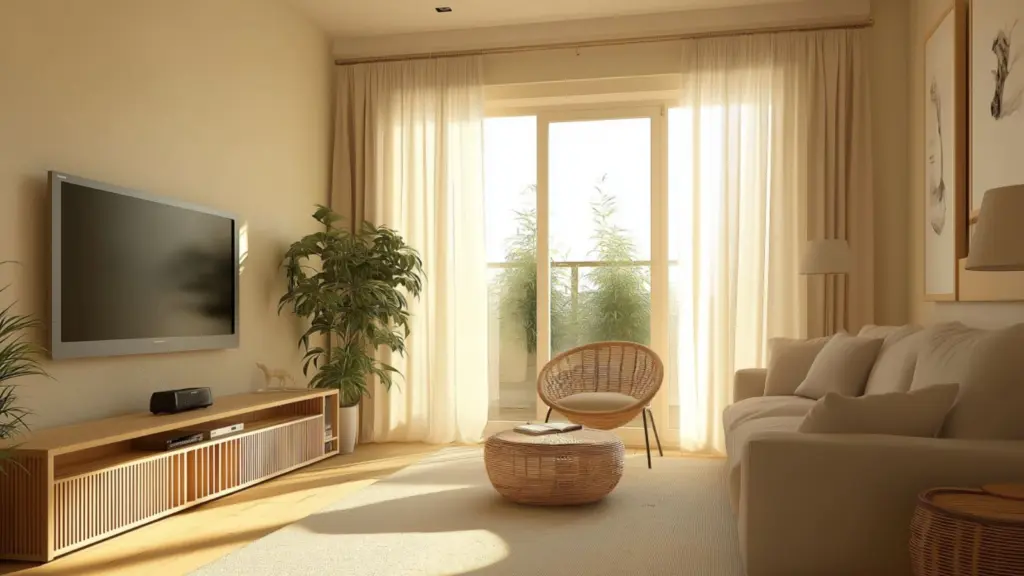
When it comes to furniture selection, aim for clean lines and natural finishes that support a warm minimalist look. The goal is to achieve a tranquil and uncluttered space while still offering comfort and visual interest.
Beige sofas with simple silhouettes are the anchor of this design. Pair them with Scandinavian-inspired wooden coffee tables or sideboards in warm oak, teak, or walnut. Avoid furniture with shiny, lacquered finishes—opt for matte, textured, or raw wood tones.
Accent chairs in boucle, canvas, or woven rattan provide an additional seating element that feels artisanal and grounded. Stick with neutral upholstery to maintain flow, and use structural differences to introduce variation.
Limit furniture pieces to what you really need. One coffee table, a couple of side chairs, and layered ottomans or stools can keep the room open and airy while still functional.
Furniture Style Checklist
| Piece of Furniture | Material + Design Style | Style Tip |
|---|---|---|
| Sofa | Beige linen or cotton | Add contrast pillows in muted earthy tones |
| Coffee Table | Light oak, rustic wood | Pair with ceramic or stone trays |
| Accent Chair | Rattan, boucle, leather | Choose curved arms for softness |
| Media Console | Cane-front or wood slatted | Keep minimal decor on top |
Use Lighting to Enhance the Serene Mood
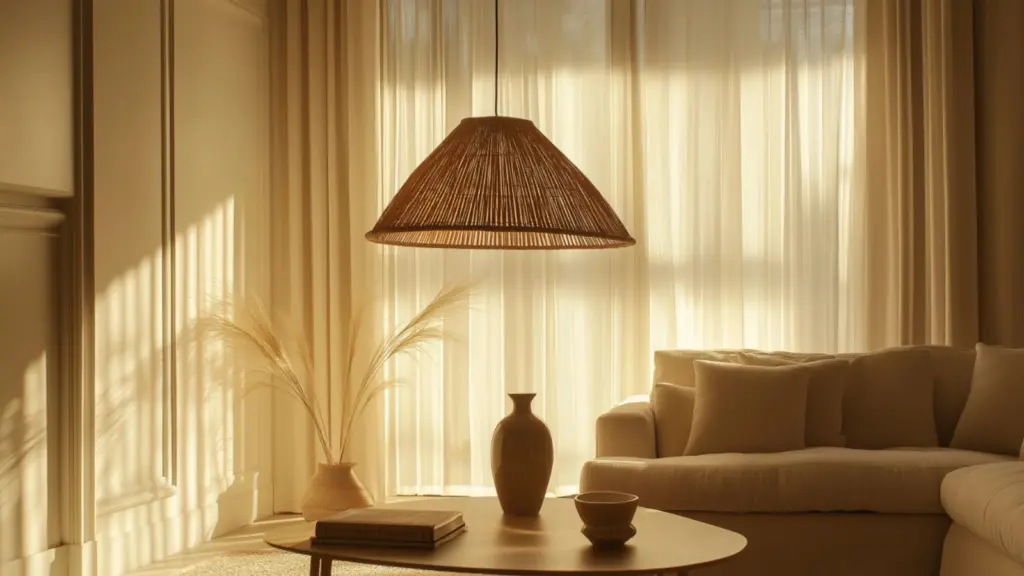
Lighting is one of the most effective yet often overlooked tools in setting a room’s atmosphere. In a beige living room filled with natural elements, lighting should be soft, layered, and supportive of the space’s tranquil energy.
Natural light should always be the priority. Use sheer curtains to filter harsh sunlight while allowing brightness to fill the space. Position mirrors strategically to reflect light and make the room feel more expansive.
For artificial lighting, lean into warm-toned bulbs that mimic candlelight. Overhead lighting should be understated—think flush mount fixtures with linen covers or rattan pendants. Floor lamps with fabric shades and dimmable table lamps can help create pockets of light that feel cozy and intentional.
Accent lighting adds a gentle glow and can highlight textural or sculptural elements in the room. Try LED strip lighting behind shelves or sconces near artwork to subtly draw attention.
Lighting Style Overview
| Lighting Type | Best Placement | Material and Style Tip |
|---|---|---|
| Pendant Light | Centered over seating area | Choose woven, linen, or clay shades |
| Table Lamps | End tables, consoles | Neutral ceramic bases with soft linen shades |
| Floor Lamps | Reading corners, behind sofa | Arc-style or tripod with fabric shade |
| Accent Lighting | Bookshelves, behind plants | Soft LED for indirect glow |
Incorporate Artwork and Objects That Reflect Calm
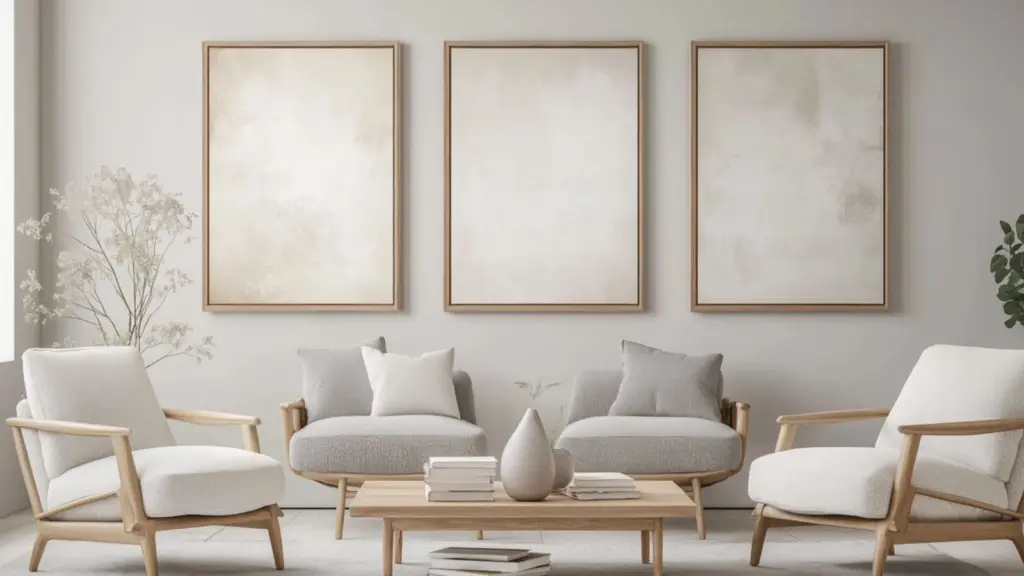
Art and objects are the finishing touches that make a space feel personal and complete. For a serene beige living room, choose wall art and decor that reflects nature, stillness, and organic beauty.
Abstract line art, soft watercolor landscapes, or monochromatic photography in wooden or white frames blend effortlessly with neutral palettes. Avoid overly bright or bold pieces that interrupt the tranquil theme.
For objects, display minimal collections—stacked books with linen covers, hand-carved wooden bowls, or textured clay sculptures. Group similar items for impact and cohesion, using repetition and spacing to create rhythm.
Wall shelves, fireplace mantels, or coffee tables are perfect stages for showcasing your curated pieces. Rotate them seasonally to keep things fresh and intentional.
Art & Object Styling Table
| Decorative Element | Placement Idea | Style Consideration |
|---|---|---|
| Framed Art Prints | Above sofa or fireplace | Use frames in light wood or neutral tones |
| Ceramic Objects | Coffee tables, open shelves | Choose matte finishes for organic effect |
| Natural Books | Side tables, consoles | Stack in threes with decorative topper |
| Sculptural Pieces | Corners, niches, mantels | Select one oversized piece per surface |
Conclusion
A beige living room filled with natural elements is more than just a trend—it’s a lifestyle choice rooted in calm, intention, and timeless beauty. By grounding your space in neutral hues and layering in textures, materials, and light, you create a sanctuary where the mind can rest and creativity can flourish.
Whether you’re redesigning your entire living space or simply refreshing a few details, the principles of earthy minimalism and organic design will help guide your choices. Beige doesn’t have to be bland—it can be warm, elegant, and deeply serene when balanced with the beauty of the natural world. Let your living room be a place where comfort meets clarity and simplicity becomes the ultimate luxury.

